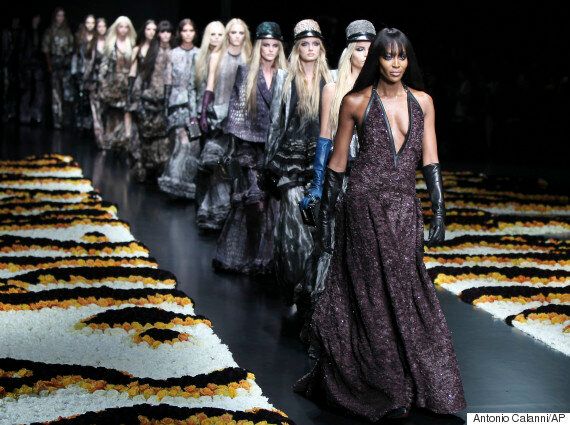Little known fact: I spent some of my childhood growing up in India.
When I returned to England I went from watching beautiful, brown voluptuous women in Bollywood like Rekha and Sridevi onscreen to coming to a place where brown women were not seen on TV or in magazines. Well, unless you count 'Geeeetaa!' from Eastenders' Sanjay and Geeta and... I'm not.
They certainly - barring the solitary majesty of Naomi Campbell and Iman - were not to be found on the catwalks.
Then again, this was 1992. Britain's ethnic landscape was a different place. It was a time where the first and second generation of British-born immigrant children were only just starting to enter the workforce, and they tended to choose safe careers in medicine and accounting over creative ones.
So that was 1992.
But why, over 20 years on, are we still not that much better off when it comes to colour diversity on the catwalks?

In my journey to write an unbiased picture of the current catwalk diversity problem and the possible solutions, I have become increasingly incensed by a) the wall of silence that surrounds the issue and b) the excuses that are offered up as an explanation for why this is the case.
Are we really to believe, in 2015, that 80% of models on the catwalk were white because there were a lack of models, or that the stylist had a different vision for the clothes?
Surely the whole point about catwalk shows which is to inspire, transcend and turn fashion into art that literally walks, is that it should not be tethered or affected by something like the colour of a person's skin?
While the glamour of the catwalks may seem a million miles from us mere plebs that walk the earth, it has a far bigger impact than the stylists, designers and casting directors can comprehend.
It's the biggest showcase of fashion (and beauty) in the world. Those pictures from New York, London, Paris and Milan are reproduced in hundreds of magazines, beamed all over the globe, and it sets the standard for style for the next six months.
If we look at the trickle down effect, this impacts what type of clothes the high street produces, how they advertise them, and that in turn affects the beauty industry, the type of skins they cater to and how broadly.
All of these cities - the big four - are thoroughly ethnically diverse. And even if they weren't, the shows use models from all over the world which I'm pretty sure isn't 80% white.
But what does it say, to all of those little girls, teenagers and young women, who aren't seeing representations of themselves at the biggest fashion events of the year?
I can only speak from experience, that it makes us feel less-than. It certainly didn't make me feel beautiful - I didn't see many representations of my kind of skin anywhere.
Whether it was cruising the beauty aisles at Boots trying to find a foundation dark enough so I wouldn't look like a mime, or searching for resonance in these tall, willowy models, and not finding any, I spent most of my teenage years feeling invisible and ugly.
It wasn't until Selfridges shipped over a load of Indian models for a special event they were having and I came across them serenely sailing down an escalator that I thought 'Wow, these women are stunning. I'm so proud to be brown."
It comes down to as simple a principle as this: if we are holding up a standard of beauty, and we don't see people who look like us reflected in that standard, it doesn't make us feel particularly beautiful.
And it's not restricted to models of colour either - we're talking about representing curvy women and all of the other minorities from women with disabilities to transgender models.
So what will effect change? You'll have to read our upcoming long form feature asking models and champions of diversity within the industry.
But for now, this London Fashion Week, we're supporting diversity by asking all of you to tweet or Instagram with the hashtag #LFW4All.
In the same way that British TV - once so painfully white with a predilection for painting any ethnic minorities into jaw-gnawingly awkward stereotypes - changed to reflect the social landscape, so too can our Fashion Weeks.
The main barrier to change is people giving excuses as to why this is and continuing to hide behind them.
Because honestly, in this wonderfully diverse age, when people from all colours, sizes and orientations move more freely in the world, and when you have someone as respected as Naomi Campbell who has been modeling since the 80s saying this isn't right, then what excuse really is there to not change?
